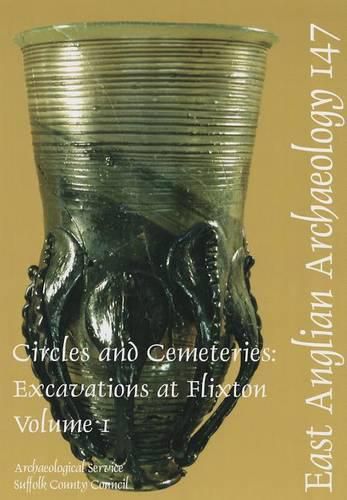Excavations at Flixton Park Quarry
Penelope Walton Rogers,Stuart Boulter

Excavations at Flixton Park Quarry
Penelope Walton Rogers,Stuart Boulter
This volume is the first in a series that will cover the extensive and significant archaeological deposits recorded at this quarry on the south side of the Waveney Valley. It includes evidence of prehistoric, late Iron Age/early Roman and early Anglo-Saxon date. The prehistoric archaeology is dominated by three monumental structures. The earliest, dating to the late Neolithic, is a post-hole circle of approximately 18m diameter, with an entrance to the north-west. Various interpretations are explored including the possibility that astronomical alignments were invested in the monument. The circle was subsequently overlain by an early Bronze Age ring ditch and un-urned cremation. A second ring-ditch nearby subsequently became the focus for burial in the early Anglo-Saxon period (Flixton I). Its central mound was re-used in turn as the site of a windmill in the late medieval or early post-medieval period. The Iron Age/Roman archaeology included an enigmatic palisaded enclosure - closely-spaced posts in a series of slots and individual post-holes describing a near-perfect circle 27m diameter. Direct dating evidence was sparse, but pottery from adjacent pits suggested activity dated around the time of the Conquest. Various functions for the post-hole circle are explored. Two Anglo-Saxon burial grounds were found: Flixton I, a small plot associated with a prehistoric barrow: and Flixton II, larger and at first contained within a rectangular plot close to another barrow. Fifty-one of an estimated 200 or more graves have been excavated. Burial at Flixton II later shifted southwards onto the barrow itself, where eleven more graves were identified. The excavated graves in Flixton II date from c.500 AD to the middle of the 7th century, and Flixton I is likely to have been contemporary with its earliest phase. The material evidence has been used as a base from which to discuss the social make-up of the community who buried their dead in the two burial grounds. The role of this community in the southern marches of the former Iceni territory has also been explored.
This item is not currently in-stock. It can be ordered online and is expected to ship in approx 4 weeks
Our stock data is updated periodically, and availability may change throughout the day for in-demand items. Please call the relevant shop for the most current stock information. Prices are subject to change without notice.
Sign in or become a Readings Member to add this title to a wishlist.


